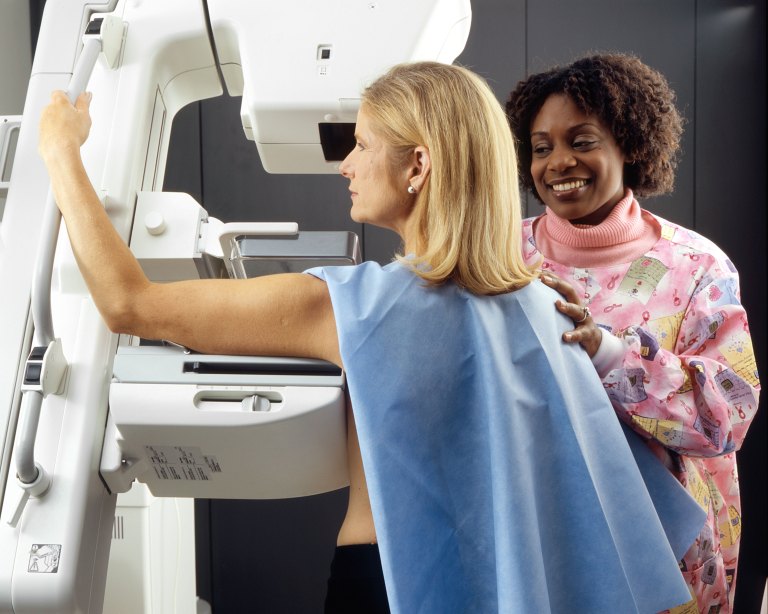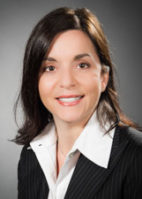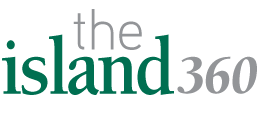
Mammograms are one of the best ways to protect against breast cancer, said Dr. Nina Vincoff, the chief of Northwell Health’s breast imaging division.
Research has shown that routine tests, which people should get annually starting at age 40, have decreased the breast cancer mortality rate by about 40 percent since they became commonplace about three decades ago, Vincoff said.
Technological advances have led to the development of 3D mammograms, which Vincoff said improve the chance of detecting cancer by about 40 percent.
The 3D mammogram is the same for the patient as a standard test — a machine takes just two photos of each breast to create a three-dimensional image that shows many images from different angles, Vincoff said.
“We are able to see things that we were not able to see before without taking extra pictures,” Vincoff said.

Since March, every mammogram given at a Northwell facility has been a 3D test, Vincoff said. Nearly 50,000 mammograms were performed across the health system last year, she said.
The technology has been available for seven to eight years, Vincoff said. Very few women turned them down after Northwell started offering them between 2011 and 2012, she said.
Early detection “really remains critical” to fighting breast cancer, which is the second-deadliest cancer among women in the U.S., Vincoff said.
More than 200,000 American women are diagnosed with the disease each year, and one in eight is diagnosed with it in her lifetime.
“To me, there’s no question that this examination is beneficial to women,” Vincoff said.
About two thirds of the mammograms Northwell performs are routine tests to screen for cancer, Vincoff said. The rest are performed when a patient has a lump or other problem that needs to be evaluated, she said.
No matter the reason for getting a mammogram, Vincoff said, the tests are “easy to tolerate” and “inexpensive to perform.”
Most insurance policies cover screening mammograms as part of annual health checkups, so there’s usually no out-of-pocket cost to get one, Vincoff said.
“By not having your mammogram, you increase your odds of dying from breast cancer,” she said. “It’s as simple as that.”
Other tests are also available to help find breast cancer early, Vincoff said.
People with dense breast tissue often get a breast ultrasound with a mammogram, Vincoff said. The dense tissue, which about 45 percent of the population has, is harder for the mammogram equipment to see through on its own, she said.
A breast MRI can also help people who have a family history of breast cancer or who carry the gene linked to the disease, Vincoff said.
“It’s not a test we can offer to everyone, but it’s a test for high-risk patients that, again, can really make a difference and be life-saving,” she said.







This is the typical misleading screening hype put out practically day after day by well paid members and mouthpieces of a huge corrupt business (allopathic medicine), such as Dr. Vincoff.
Would you still trust the official mammogram “experts” if you knew that the majority of them are huge profiteers of mammography? Such as the author of this medical infomercial. Who still believes the hype put out by the typical car salesman? Why would you readily believe the misleading and false hype of a well paid member and salesman for the big medical business especially since the real truth has been out there for quite some time?
That’s the truthful reality:
Because…IF…….. women (and men) at large were to examine the mammogram data above and beyond the information of the mammogram business cartel (eg American Cancer Society, National Cancer Institute, Komen), they’d also find that it is almost exclusively the big profiteers of the test, ie. the “experts,” (eg radiologists, oncologists, medical trade associations, breast cancer “charities” etc) who promote the mass use of the test and that most pro-mammogram “research” is conducted by people with massive vested interests tied to the mammogram industry.
Contrary to the official narrative (which is based on medical business-fabricated pro-mammogram “scientific” data), there is marginal, if any, reliable evidence that mammography, both conventional and digital (3D), reduces mortality from breast cancer in a significant way in any age bracket but a lot of solid evidence shows the procedure does provide more serious harm than serious benefit (read the books: ‘Mammography Screening: Truth, Lies and Controversy’ by Peter Gotzsche and ‘The Mammogram Myth’ by Rolf Hefti – see synopsis at TheMammogramMyth dot com).
Most women are fooled by the misleading medical mantra that early detection by mammography saves lives simply because the public has been fed (“educated” or rather brainwashed) with a very one-sided biased pro-mammogram set of information circulated by the big business of mainstream medicine. The above mentioned two independent investigative works show that early detection does not mean that there is less breast cancer mortality.
Because of this one-sided promotion and marketing of the test by the medical business, women have been obstructed from making an “informed choice” about its benefits and risks which have been inaccurately depicted by the medical industry, favoring their business interests.
Operating and reasoning based on this false body of information is the reason why very few women understand, for example, that a lot of breast cancer survivors are victims of harm instead of receivers of benefit. Therefore, almost all breast cancer “survivors” and the general public blindly repeat the official medical hype and disinformation .